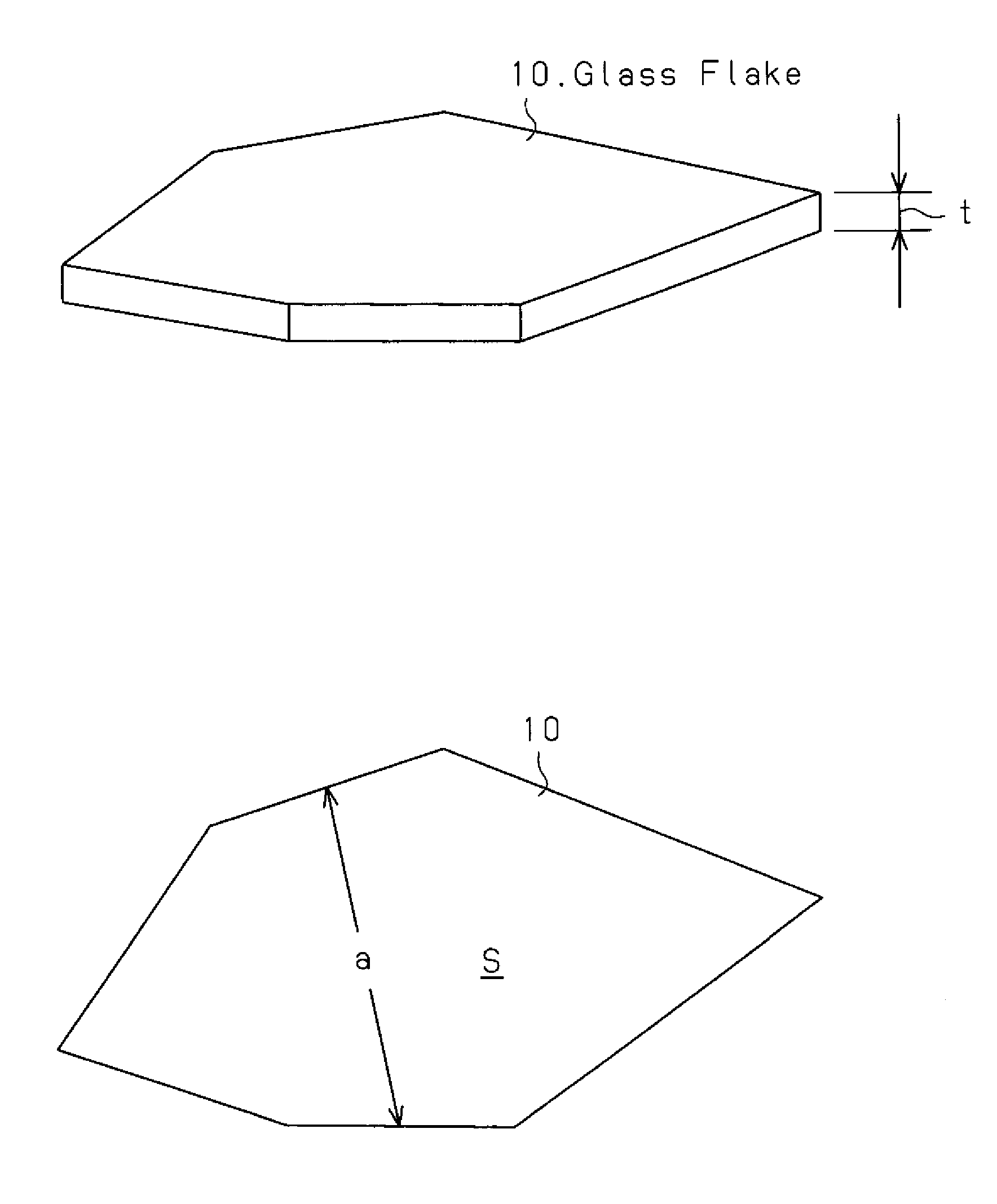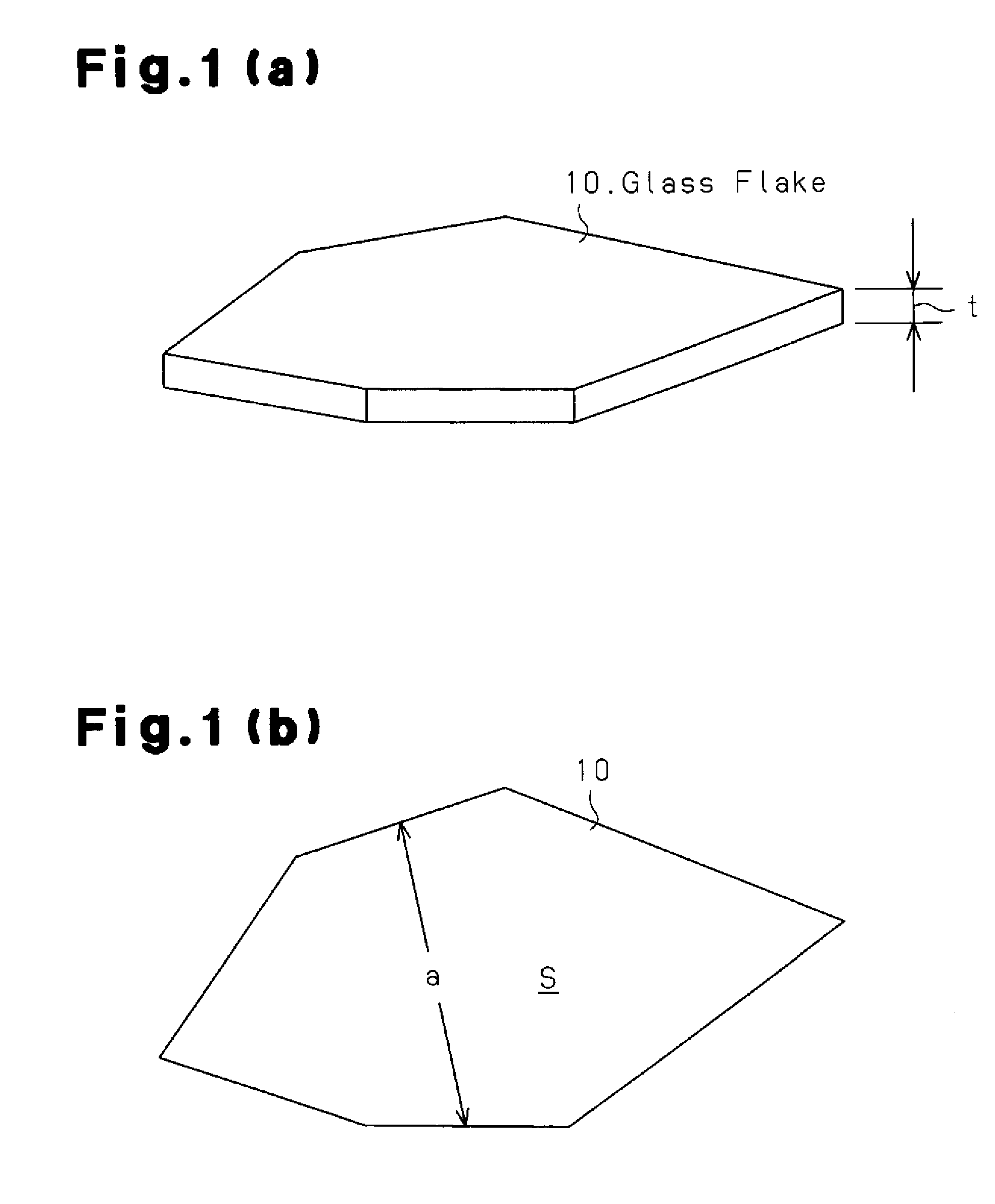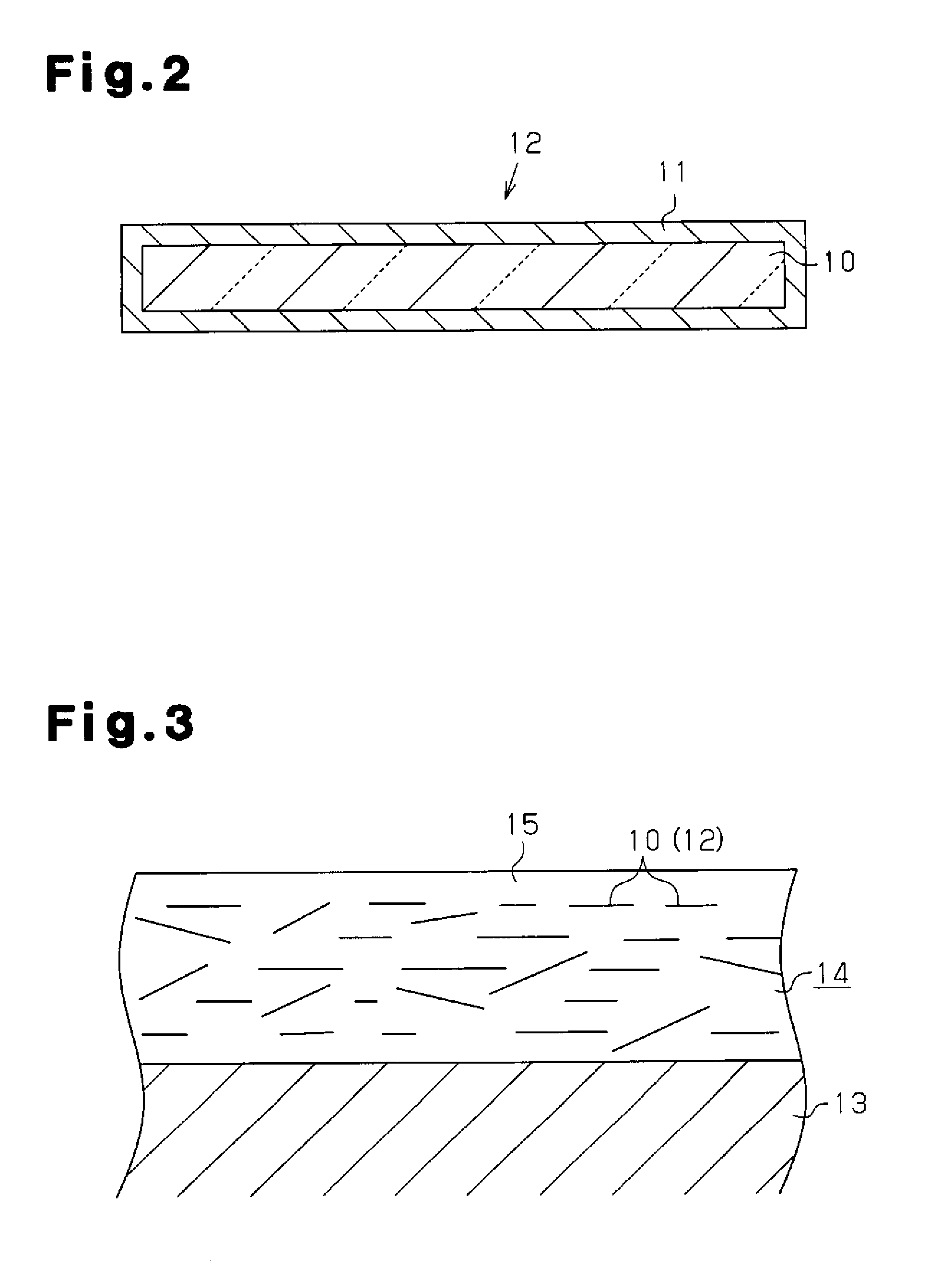Glass flake and coated glass flake
- Summary
- Abstract
- Description
- Claims
- Application Information
AI Technical Summary
Benefits of technology
Problems solved by technology
Method used
Image
Examples
examples 61 to 120
[0170]Using the glass flakes having the compositions of examples 1 to 60 fabricated in this manner, the coated glass flakes 12 of examples 61 to 120 were fabricated through the procedures described below. First, the glass flakes were crushed into suitable grain diameters. Then, liquid phase processing was performed to cover the surface of the glass flakes with titanium dioxide. The liquid phase processing deposits titanium dioxide from metal salts onto the surface of the glass flakes 10. More specifically, stannous chloride dihydrate serving as a metal salt was dissolved in ion-exchanged water and diluted hydrochloric acid was added for adjustment to pH 2.0 to 2.5. The glass flakes 10 were added to the solution while being agitated and then filtered after ten minutes. Subsequently, chloroplatinic acid hexahydrate was dissolved in the ion exchanged water and the filtered glass flakes 10 were added while being agitated and filtered after ten minutes. Then, a hydrochloric acid solution...
examples 121 to 180
[0172]Using the glass flakes having the compositions of examples 1 to 60, the coated glass flakes 12 of examples 121 to 180 were fabricated through the procedures described below. First, the glass flakes were crushed into suitable grain diameters. Then, the surfaces of the glass flakes were coated with silver by performing conventional electroless plating. The conventional electroless plating will now be described. First, preprocessing using stannous chloride and chloroplatinic acid hexahydrate were performed in the same manner as in examples 65 to 128 on the glass flakes 10. Then, 200 g of silver nitrate and a suitable amount of ammonia water were added to 10 L of ion exchanged water to prepare a silver liquid. Then, 1 kg of glass flakes that have undergone the preprocessing were added to the silver liquid while being agitated. Further, 14 percent by mass of sodium-potassium tartrate solution was added as a reduction liquid, and the surfaces of the glass flakes 10 were coated with ...
examples 241 to 300
[0175]The coated glass flakes 12 of examples 61 to 120 were mixed with epoxy acrylate to obtain the vinyl ester paints of examples 241 to 300 containing the coated glass flakes 12. The vinyl ester paints had satisfactory dispersibility in the glass flakes 10 and achieved a satisfactory outer appearance.
PUM
| Property | Measurement | Unit |
|---|---|---|
| Temperature | aaaaa | aaaaa |
| Temperature | aaaaa | aaaaa |
| Temperature | aaaaa | aaaaa |
Abstract
Description
Claims
Application Information
 Login to View More
Login to View More - R&D
- Intellectual Property
- Life Sciences
- Materials
- Tech Scout
- Unparalleled Data Quality
- Higher Quality Content
- 60% Fewer Hallucinations
Browse by: Latest US Patents, China's latest patents, Technical Efficacy Thesaurus, Application Domain, Technology Topic, Popular Technical Reports.
© 2025 PatSnap. All rights reserved.Legal|Privacy policy|Modern Slavery Act Transparency Statement|Sitemap|About US| Contact US: help@patsnap.com



